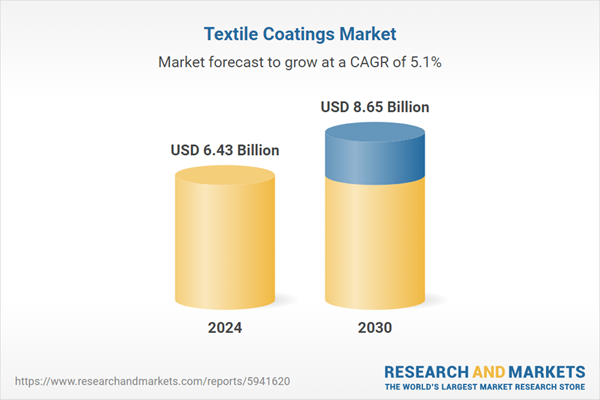Thermoplastic is the fastest growing segment, Asia-Pacific is the largest regional market
Speak directly to the analyst to clarify any post sales queries you may have.
10% Free customizationThis report comes with 10% free customization, enabling you to add data that meets your specific business needs.
Key Market Drivers
The escalating demand for high-performance and functional textiles stands as a primary driver, transforming material requirements across various industries. Sectors such as automotive, medical, and protective apparel increasingly rely on textiles that offer advanced properties beyond conventional aesthetics, including enhanced durability, specific protective qualities, and improved comfort. This necessitates specialized coatings to impart features like water resistance, flame retardancy, chemical resistance, and abrasion resistance. Despite extensive review of industrial association reports, research articles, and company news from the last two years, precise numerical data specifically detailing the market value or growth rate of high-performance textiles from non-market research sources within this timeframe was not identifiable.Key Market Challenges
The increasing stringency of environmental regulations concerning chemical usage, product safety, and disposal significantly impedes the growth of the global textile coatings market. These regulations, particularly targeting non-biodegradable coating components, necessitate substantial investments in research and development for new formulations, manufacturing process adjustments, and stringent compliance procedures. This raises operational costs for manufacturers and extends product development cycles, thereby slowing market innovation and expansion. The complexity of adhering to diverse regional environmental standards also complicates market entry and global trade for coated textile producers.Key Market Trends
The increasing adoption of sustainable and bio-based coatings represents a pivotal shift driven by heightened environmental awareness and evolving regulatory landscapes. This trend emphasizes the development and application of textile coatings derived from renewable resources, moving away from fossil fuel-based materials to reduce ecological impact. Manufacturers are increasingly investing in green chemistry solutions to meet consumer demand for eco-friendly products and comply with stringent sustainability standards. According to Covestro, in November 2023, the company introduced Impranil CQ DLU, a novel aliphatic polyester carbonate polyether polyurethane dispersion for textile coating, where approximately 34 percent of the carbon content originated from plants. This innovation highlights the industry's commitment to developing high-performance coatings with a reduced carbon footprint, directly influencing material selection and production processes across the market.Key Market Players Profiled:
- Arkema Group
- BASF SE
- Clariant AG
- Covestro AG
- Formulated Polymer Products Ltd
- Huntsman International LLC
- Impregilo UK Ltd
- Seyntex NV
- Solvay SA
- SRF Ltd
Report Scope:
In this report, the Global Textile Coatings Market has been segmented into the following categories:By Polymer Type:
- Thermoplastics
- Thermosets
- Rubber
- Others
By Application:
- Clothing
- Transportation
- Medical
- Construction
- Others
By Region:
- North America
- Europe
- Asia-Pacific
- South America
- Middle East & Africa
Competitive Landscape
Company Profiles: Detailed analysis of the major companies present in the Global Textile Coatings Market.Available Customizations:
With the given market data, the publisher offers customizations according to a company's specific needs. The following customization options are available for the report.Company Information
- Detailed analysis and profiling of additional market players (up to five).
This product will be delivered within 1-3 business days.
Table of Contents
Companies Mentioned
The companies profiled in this Textile Coatings market report include:- Arkema Group
- BASF SE
- Clariant AG
- Covestro AG
- Formulated Polymer Products Ltd
- Huntsman International LLC
- Impregilo UK Ltd
- Seyntex NV
- Solvay SA
- SRF Ltd
Table Information
| Report Attribute | Details |
|---|---|
| No. of Pages | 186 |
| Published | November 2025 |
| Forecast Period | 2024 - 2030 |
| Estimated Market Value ( USD | $ 6.43 Billion |
| Forecasted Market Value ( USD | $ 8.65 Billion |
| Compound Annual Growth Rate | 5.0% |
| Regions Covered | Global |
| No. of Companies Mentioned | 11 |









